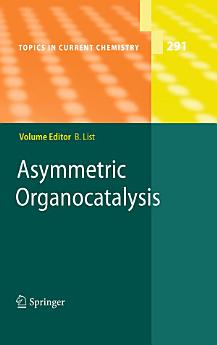Asymmetric Organocatalysis
Benjamin List
nov 2009 · Topics in Current Chemistry Libro 291 · Springer
eBook
460
Páginas
reportLas valoraciones y las reseñas no se verifican. Más información
Información sobre este eBook
As nucleophiles, simple alkenes are typically so unreactive that only highly active electrophiles, such as carbocations, peroxides, and halogens will react with them. For the generation of carbon-carbon bonds, milder methods will often be required. Fortunately, it is possible to increase the reactivity of alkene-type p-nucleophiles by introducing electron-donating substituents. Substitution of one H with an OH or OR gives an enol or a vinyl ether, which are already much better nucleophiles. Using nitrogen instead of oxygen, one obtains even better nucleophiles, enamines. Enamines are among the most reactive neutral carbon nucleophiles, exhibiting rates that are even comparable to some charged nucleophiles, such as enolates [1, 2]. Most enamines, unfortunately, are sensitive to hydrolysis. The parent enamine, N, N-dimethylvinylamine, has in fact been prepared [3], but appears to be uns- ble. Enamines of cyclic ketones and many aldehydes can readily be isolated, however [4-7]. The instability of enamines might at first appear to diminish the utility of enamines as nucleophiles, but actually this property can be viewed as an added benefit: enamines can be readily and rapidly generated catalytically by using a suitable amine and a carbonyl compound. The condensation of aldehydes or ketones with amines initially affords an imine or iminium ion, which then rapidly loses a proton to afford the corresponding enamine (Scheme 1).
Valorar este eBook
Danos tu opinión.
Información sobre cómo leer
Smartphones y tablets
Instala la aplicación Google Play Libros para Android y iPad/iPhone. Se sincroniza automáticamente con tu cuenta y te permite leer contenido online o sin conexión estés donde estés.
Ordenadores portátiles y de escritorio
Puedes usar el navegador web del ordenador para escuchar audiolibros que hayas comprado en Google Play.
eReaders y otros dispositivos
Para leer en dispositivos de tinta electrónica, como los lectores de libros electrónicos de Kobo, es necesario descargar un archivo y transferirlo al dispositivo. Sigue las instrucciones detalladas del Centro de Ayuda para transferir archivos a lectores de libros electrónicos compatibles.








